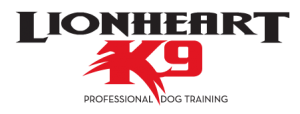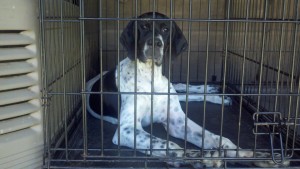Crate Training Tips for your Puppy
We have created these free crate training tips to help you teach your new pup to love and respect his crate. Crates have been used for decades in the transportation and housing of puppies and dogs. They have been instrumental in keeping puppies safe and owners happy that their possessions have not been destroyed by wayward pups with too much time on their paws and not enough guidance!
Although there is such a thing as too much time in a crate, used strategically in the raising and training of puppies, crates are beneficial to puppy owners as a means of containment when their pup cannot be supervised directly, facilitating housebreaking, keeping their pup safe in their absence and keeping their homes intact and without mess.
These Crate Training Tips are designed to help owners achieve several important goals before allowing their pet total freedom in the home.
Crate training is instrumental in helping your puppy learn many valuable lessons that he will carry with him throughout his life. If taught correctly, the crate should represent many things to your pup; safety, comfort and a pleasant place to be in your absence.
The crate represents not only a means to contain your dog in your absence or a convenient place to put him when you are too busy to be with him, but assurance knowing that your pup will not endanger himself engaging in risky behaviors like chewing, getting into trash or other hazardous notions that can not only be costly, but potentially lethal. Knowing that your pup is safe from the organic risks of your home and that your home is secured from the “puppy-ness” of your pup, you can enjoy peace of mind!
FREE Crate Training Tips!
Hopefully, you acquired your pup during a period of the week where you can spend some quality time with him and have the latitude to set aside a few days to be with him.
It is important to start out on the right foot and begin planning your daily routine before your puppy ever comes home. This way, your pup adapts to his new surroundings faster and you are better prepared to care for him since you have conditioned him to your daily routine from the very beginning!
Your pup’s first introduction to his crate should be a pleasant one. I don’t recommend just dumping him in a crate and walking away to let him scream, give him the opportunity to explore the crate on his own terms.
When you get your new pup home, make sure he has ample opportunity to relieve himself before coming indoors. Although you and your family will want to play with and cuddle your new pup, give him time to relax and explore his new surroundings. Keep an eye out for signs of hunger or being sleepy, as these are both critical tools in helping your young pup adapt to his crate.
The crate should be centrally located in the home, so your pup can see and hear all of the routine daily activities of your household. This will enable him to pattern learn the rituals of your house much sooner than if you placed it in some quiet, out-of-the-way place. There is time to move the crate later on, as your pup matures. This will also enable your family to learn to recognize your new puppy’s needs, and help them to be more proactive in his care.
Locating the crate in a moderately high traffic area also enables you to help him learn to be silent while in the crate and helps the family to understand the difference between when he requires care, like relieving himself, feeding times or scheduled walks and play time, or when he is simply demanding attention after all of his other needs are met. Should he become vocal during crate intervals when you are satisfied that his needs have been met, firmly request “QUIET!” from a distance and if he quiets, reward him with a soft “Thank you!” or other reinforcing words you will use throughout his life.
If he thinks for a minute that he can get you to come and comfort him, he will persist until you finally get fed up with the racket and release him. DON’T! To do so will only make it worse in the future and lays the ground work for anxious and needy behavior!
Once the pup starts to settle, introduce him to his crate with the door open and some soft bedding inside. Invite him to enter with a bit of food if he is hungry, and allow him to explore. Offer a treat only if he has entered on his own, then allow him to exit. If he is tired, he may seek to remain there. If he chooses to rest, allow him to do so uninterrupted. Once he awakens, immediately take him outside to relieve himself.
Repeat this throughout the first day frequently, make it fun and rewarding for him to enter his crate without assistance or physical handling from you. Research has found that pups learn faster if they think the idea is ‘their own’ and are rewarded for their efforts. Pups as young as 7 weeks are very impressionable and will retain what they learn throughout their lives.
Periodically, several times each day, your pup should be placed in his crate to help him adapt to it. It should be clean and comfortable. Toys need not be present. if they must be, large chew toys that are easily washed and disinfected are best. Please refrain from soft plush toys or bedding. Puppies of many canid species slept in dirt and rocks before they discovered couches, which is a priviledge, not a right!
Antlers are good for young dogs; they are texturally different than man-made materials, are good for keeping teeth cleaned and are excellent stress relievers for teething puppies and their owners! Products made of manufactured materials are a big mistake for a lot of reasons. A stuffed, cloth toy, fabric, rubber and even rawhide toys all resemble common objects found in any humans’ home with their scent and texture. To start out by giving your new pup such toys to chew on is an endorsement that your shoes, carpet, furniture and handbags are all appropriate too!
Be mindful that young puppies require a lot of attention. If you start out showing too much, your pup will learn to demand it and often at inappropriate times. Adhere to a strict schedule of feeding, elimination and structured play to help your pup learn to adapt to his new surroundings, the new home and the new schedule.
Don’t be alarmed if your pup wakes you up periodically during the night to relieve himself. It is uncommon for puppies under the age of 12 to 14 weeks to be reliably ‘clean’ in their crate. Be prepared to put on some slippers and escort your pup outside one or two times during the night. Don’t fall into the trap of allowing your pup to mess in his crate, too often these dogs grow up to be dirty in their crates and difficult to housebreak overall. If you do not want your dog to use your house as a toilet, be prepared to make the sacrifices early on in order to reinforce clean crate and clean house behaviors permanently!
If your puppy should dirty his crate, don’t get angry! This creates fear and anxiety and is not a good way to teach your pup to trust you. It also gives him reservations about his crate, since the anger is usually demonstrated there. He could very well learn to resent his crate, you, or your approach to him while he is in his crate. Just clean it up! Take him out anyway to be sure that he is done and return him to his crate. Move on! Puppies or even adult dogs cannot possibly understand your emotional state after such an accident! Dogs do not understand our emotions. They only respond to them.
Don’t allow your pup to demand your attention after he has relieved himself either! If you have laid the groundwork, a simple “Quiet” command will get him back to bed quickly once you return him to his crate.
Within a few days time, you have laid the groundwork for a successful night time ritual between you and your pup. He should be crate trained to the point that he will enter his crate willingly, self- entertain passively, remain quiet and be clean in his crate to the point that he makes demands to be taken out to relieve himself.
Many owners have failed to correctly introduce their pup to the crate by virtue of losing patience, consoling or otherwise rewarding unacceptable crate behavior or making the mistake of thinking that they will never need a crate and never train for it’s use. It is unfortunate that this is so, but throughout the course of a dogs’ life, he will potentially have to be crated when he goes to the Vet, at the groomer, or in boarding kennels where confinement is obviously necessary, or if you plan to travel with your dog. It is best to condition for the use of a crate and never need it than to have a dog that is fearful, anxious or stressed for being forced into a crate when that time comes.
Successful crate training for puppies helps alleviate stress on owners and paves the way for cooperative learning about housetraining, chewing and other destructive behaviors every puppy owner will eventually face. Shelters and rescues are filled with dogs that never learned the simple and easy lessons of crate training which would have prevented them from destroying their owners’ property, fouling their owners’ homes by not being properly housebroken and escaping through panic and anxiety to meet uncertain fates.
Crate Training your dog or puppy makes for happy owners!
This material is the exclusive property of Lionheart K9, L.L.C. Unauthorized reproduction in any medium without written permission of Linda I Kaim and Lionheart K9, L.L.C. will be pursued to the fullest extent of the law.

Phone: 717-880-4751
We have proudly offered dog and puppy training throughout the central Maryland area since 1989
Schedule a Consult with a Professional Trainer Today!
Schedule a consult with a professional trainer today! We can help design a plan to help you get the relationship you always wanted with your dog!
Crate Training Tips and Tricks
Call 717-880-4751
or

